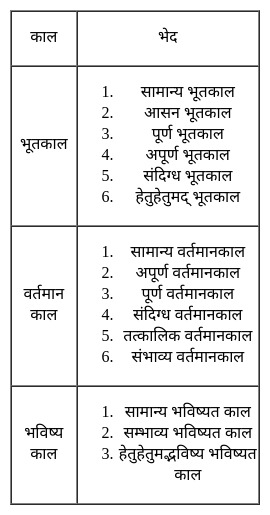WB TET Mock Test - 6 - WBTET MCQ
30 Questions MCQ Test - WB TET Mock Test - 6
What will be your effort for quality based inclusive education for all?
Aarav insists on sitting too close to the blackboard, and holds the book very close to his eyes while reading. What should a teacher do for Aarav in such a case ?
Under NEP 2020, what is the focus of the new National Curriculum Framework (NCF)?
How does NEP 2020 address the issue of school infrastructure development?
भूतकाल की दृष्टि से दिए गए वाक्य के किस भाग में त्रुटि है?
महात्मा गाँधी सत्य और अहिंसा के पुजारी है,अपने इस सिद्धांत के लिए वह विश्व में प्रसिद्ध हुए।
The question below consists of a set of labelled sentences. Out of the four options given, select the most logical order of the sentences to form a coherent paragraph.
P: In February 2010 the medical council of India announced a major change in the regulation governing the establishment of medical colleges.
Q: The new regulation also carried the following warning: "permission shall be withdrawn if the colleges resort to commercialization".
R: With this change, corporate entities were permitted to open medical colleges.
S: Since the regulation does not elaborate on what constitutes "resorting to commercialization", this will probably be a matter left to the discretion of the government.
Improve the bracketed part of the sentence with the parts given below.
Q. The police referred to him as (a complete cheat).
In the following question, an idiomatic expression and its four possible meanings are given. Find out the correct meaning of the idiom.
Giving a slap on the wrist.
Direction: In the following question, the sentences have been given in Active/ Passive Voice. From the given alternatives, choose the one which best expresses the given sentence in Passive/ Active Voice.
You should open the wine about three hours before you use it.
Some people are always bashing the government just like others bashed the one before him. But shouldn't everyone find something to praise him for, at least once in a while? What does “bashing” mean in the above selection?
Direction: A word in capital letters is followed by four words. Choose the word that is most nearly opposite in meaning to the word given in capital letters.
PREDILECTION
32 boys and 40 girls spend an average amount of Rs. 400. If the average amount spent by each boy is Rs. 500, what is the average amount spent by each girl?
At a moment, the shadow's length of a shaft is √3 times the stature of the shaft. The edge of rise of the sun is:
Sunny can complete a work in 15 days. If Bobby is 60% as efficient as Sunny, in how many days can Bobby complete the work?
(The smallest common multiple of 16, 20, and 36) ÷ (the largest common factor of 16, 20 and 36) is equal to:
The Number of hours and minutes from 6:14 a.m. to 8:02 p.m. On the same day is _____.
In which class a child identifies basic 3D-shapes such as cuboid, cylinder, cone and sphere by their names?
Mr. X says to Mr. Y that the Deccan Plateau is located in his country. To which country does Mr. X belong?
The section on 'Survey and Write' in some chapter of EVS textbook for Class-V primarily aims at:
After having taught the lesson 'What if it finished' to Class V students, Sheela administered a test to know the level of understanding of the students about the topic. To her surprise, she observed that the large number of students had not understood the related concepts. This could be mainly due to the reason that:
Gunjan organizes the following activities on different days to sensitize students to the concept of conservation of trees:
(I) Encouraging every student to adopt a tree and look after it.
(II) Organizing a debate on forest conservation.
(III) Organizing a poster making competition on trees
(IV) Showing children storage of logs of wood
Which one of the above activities will be least effective in the desired objective?
When you split the whole masoor, you get a masoor dal. But then you cannot sprout it. Why is it so?


















